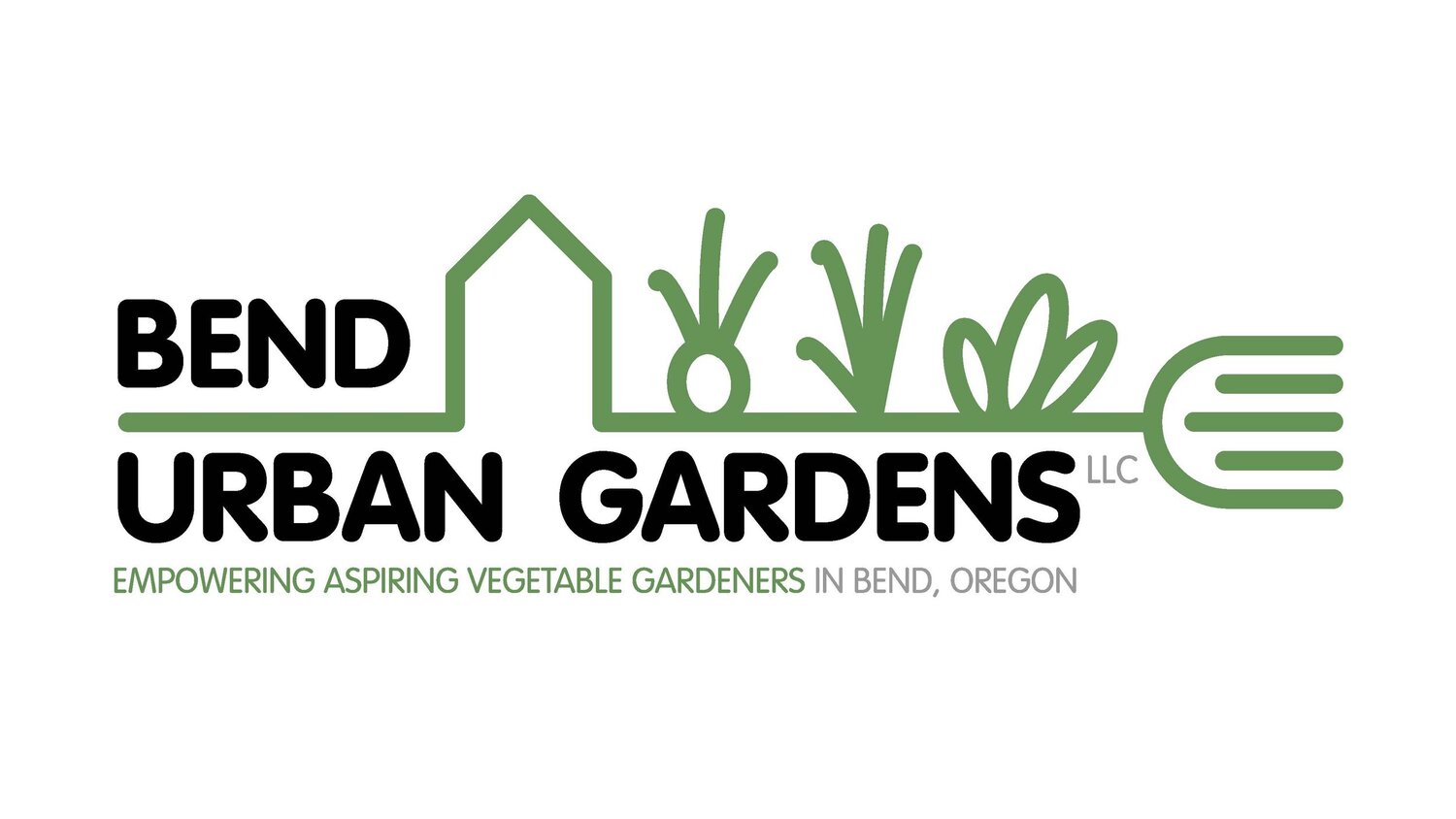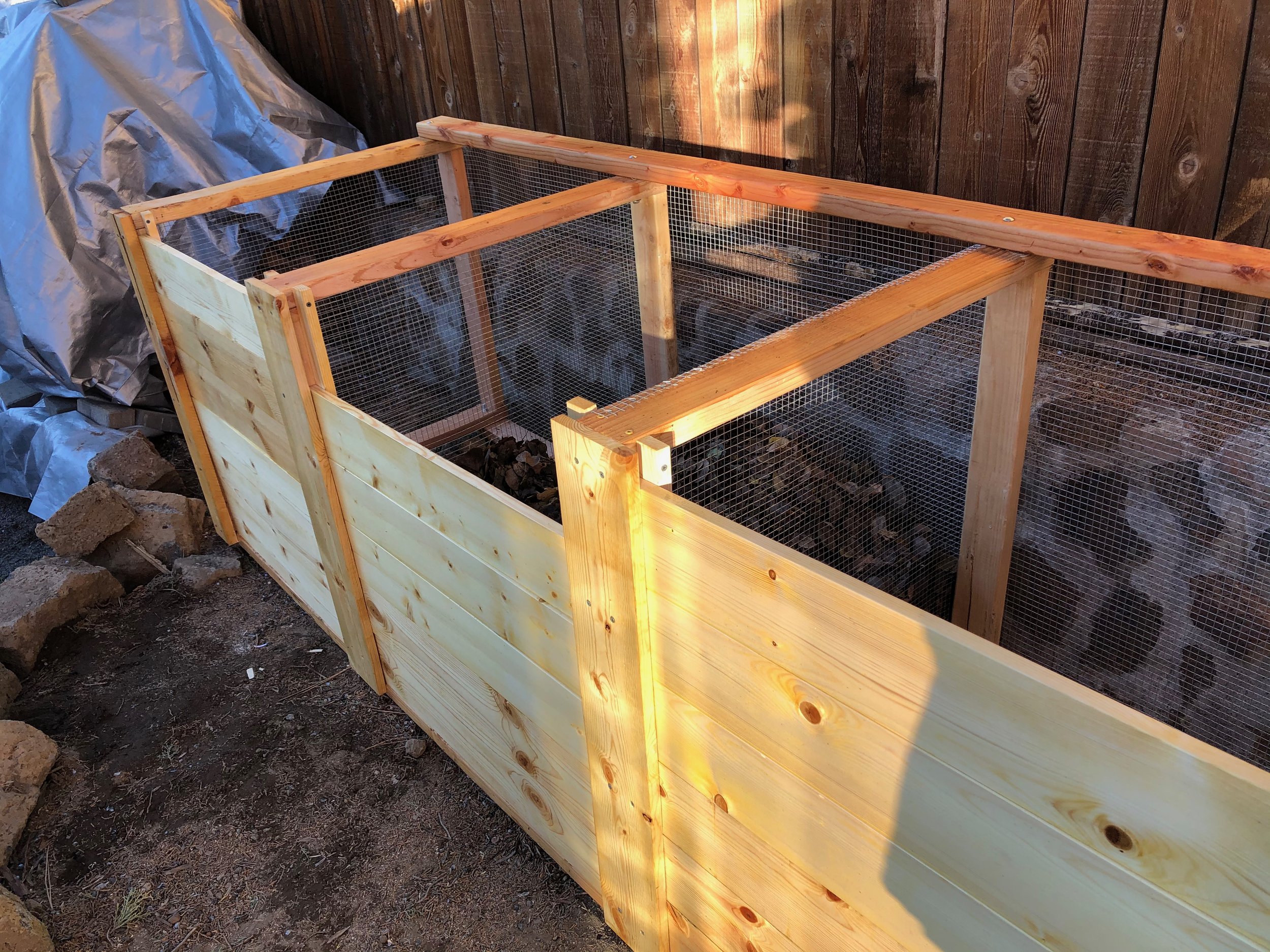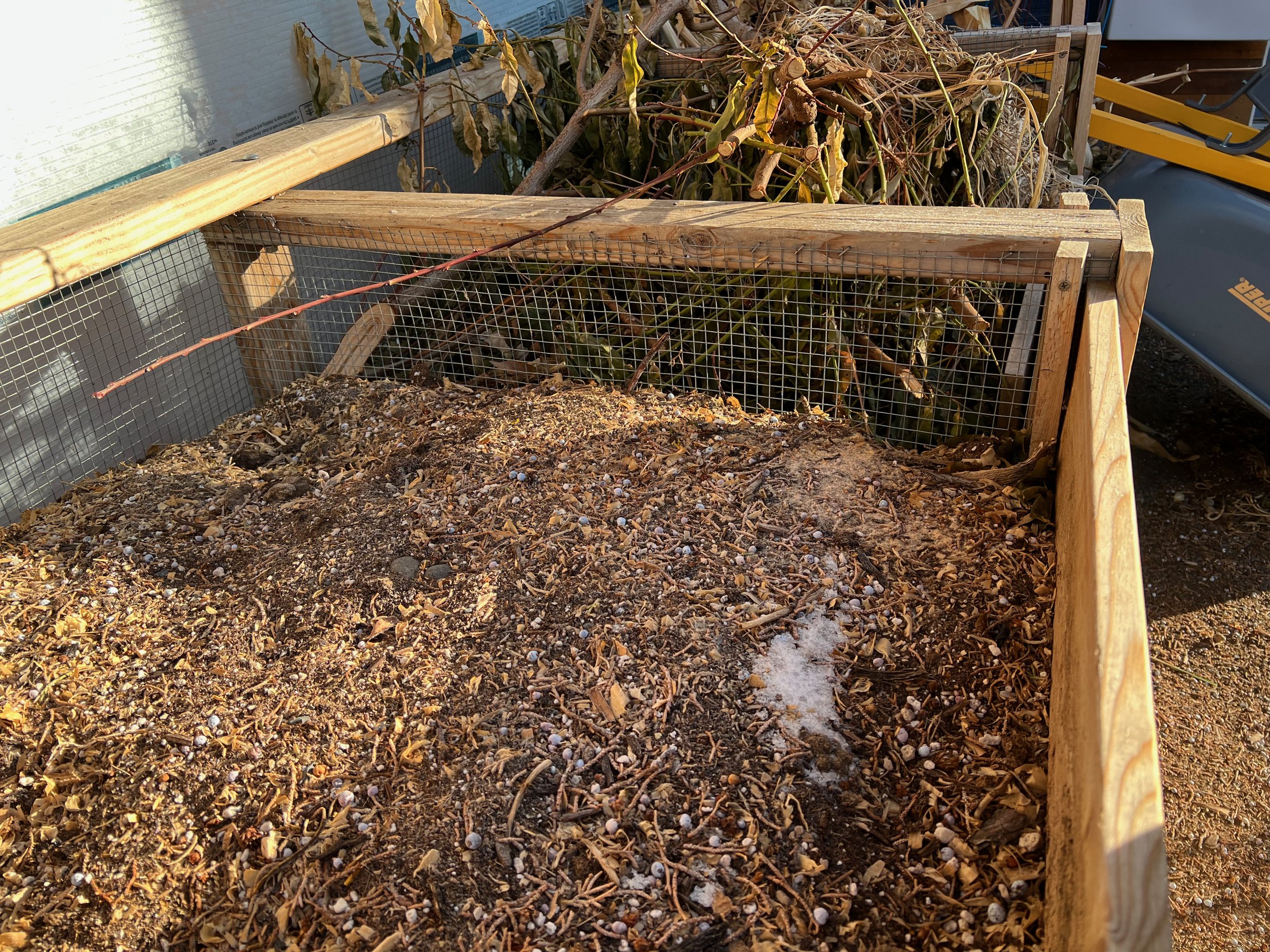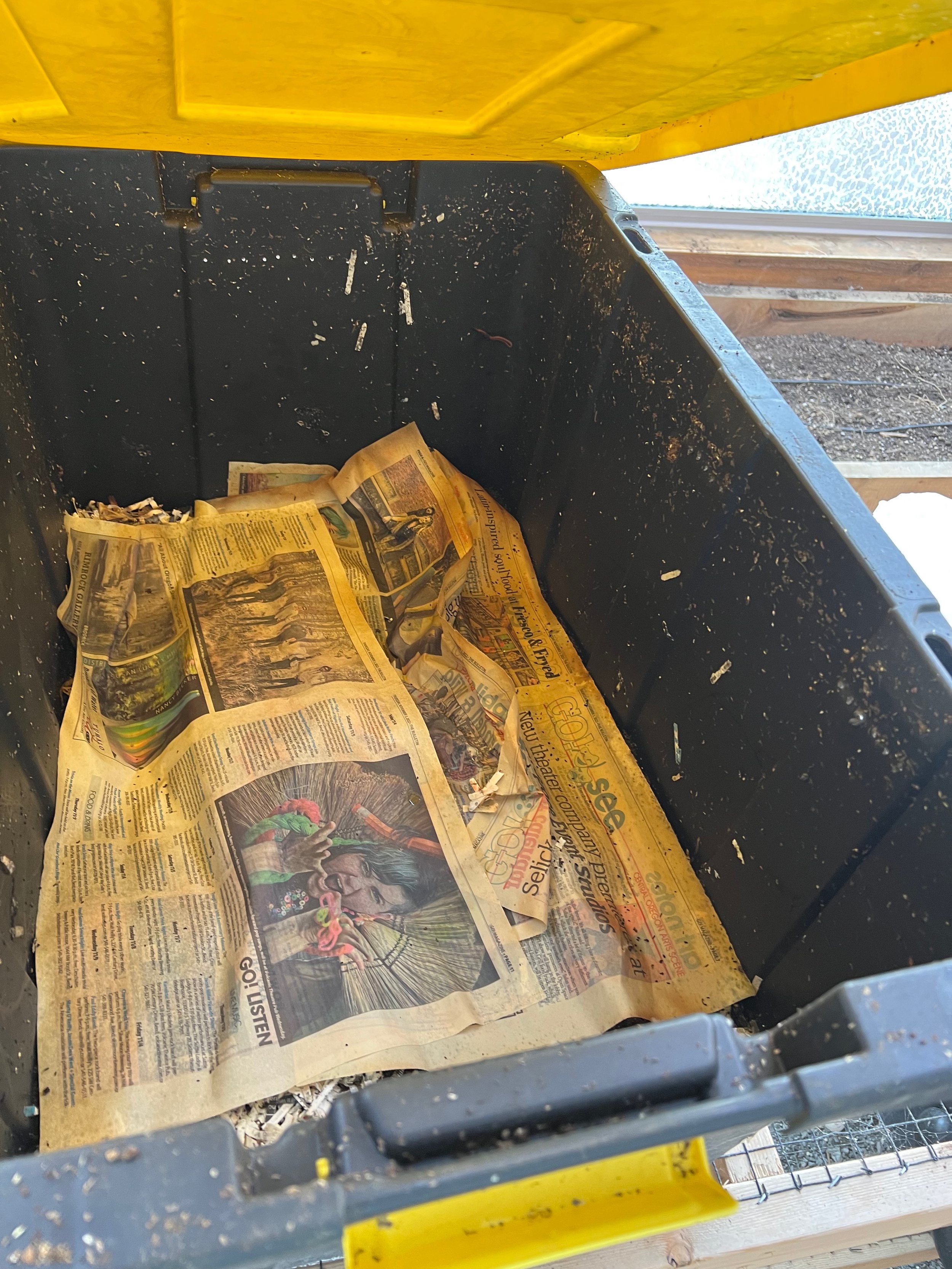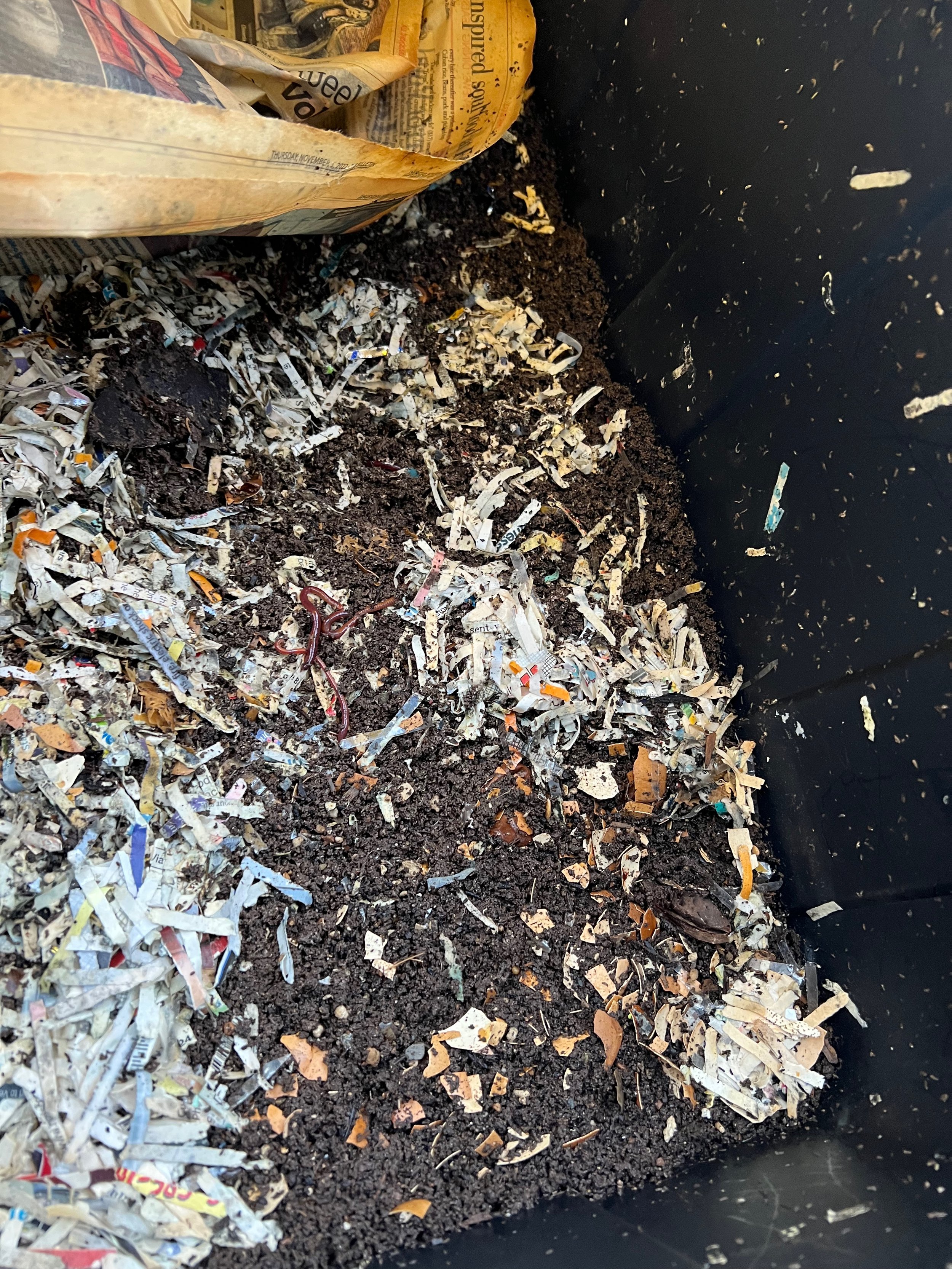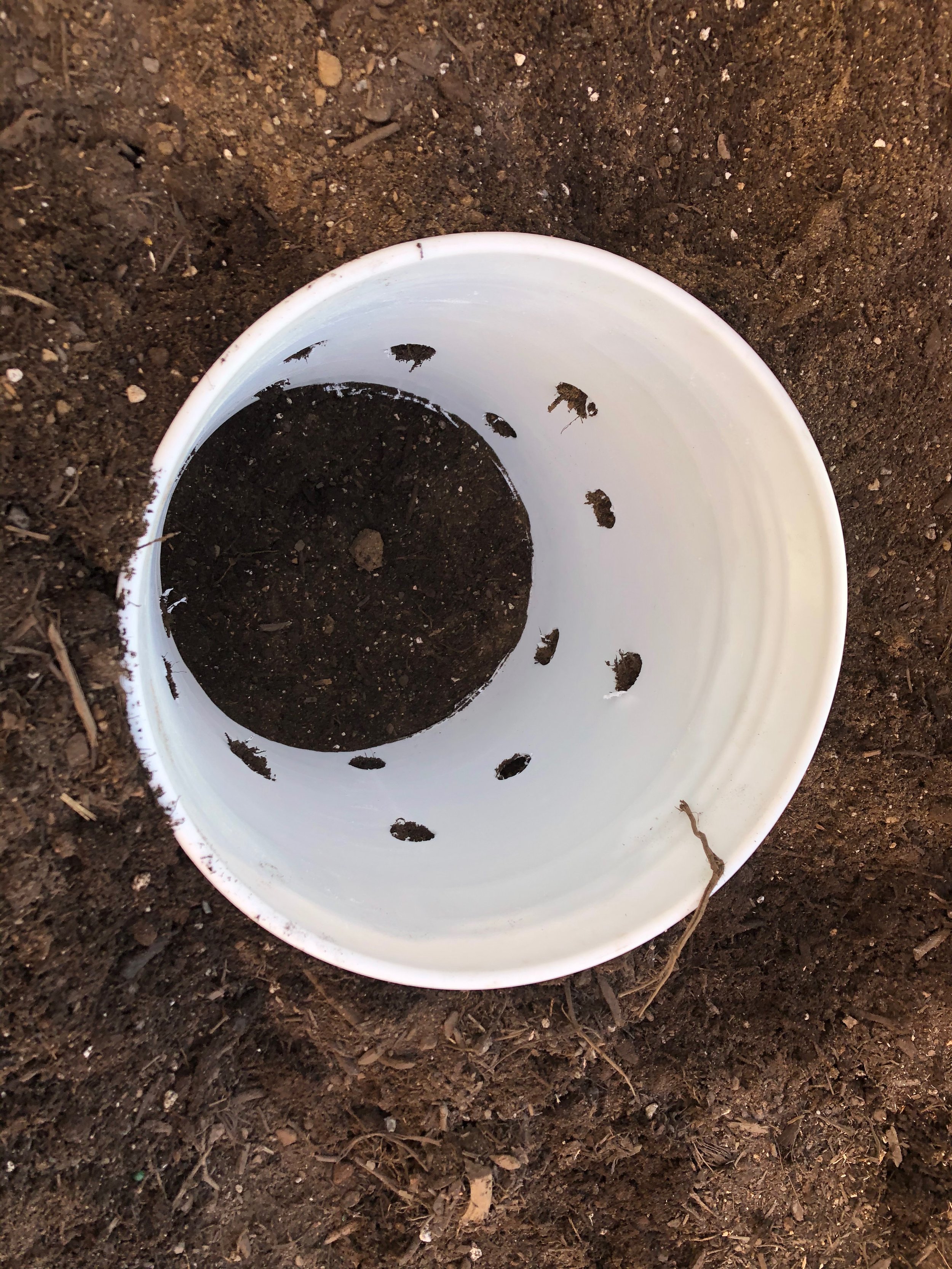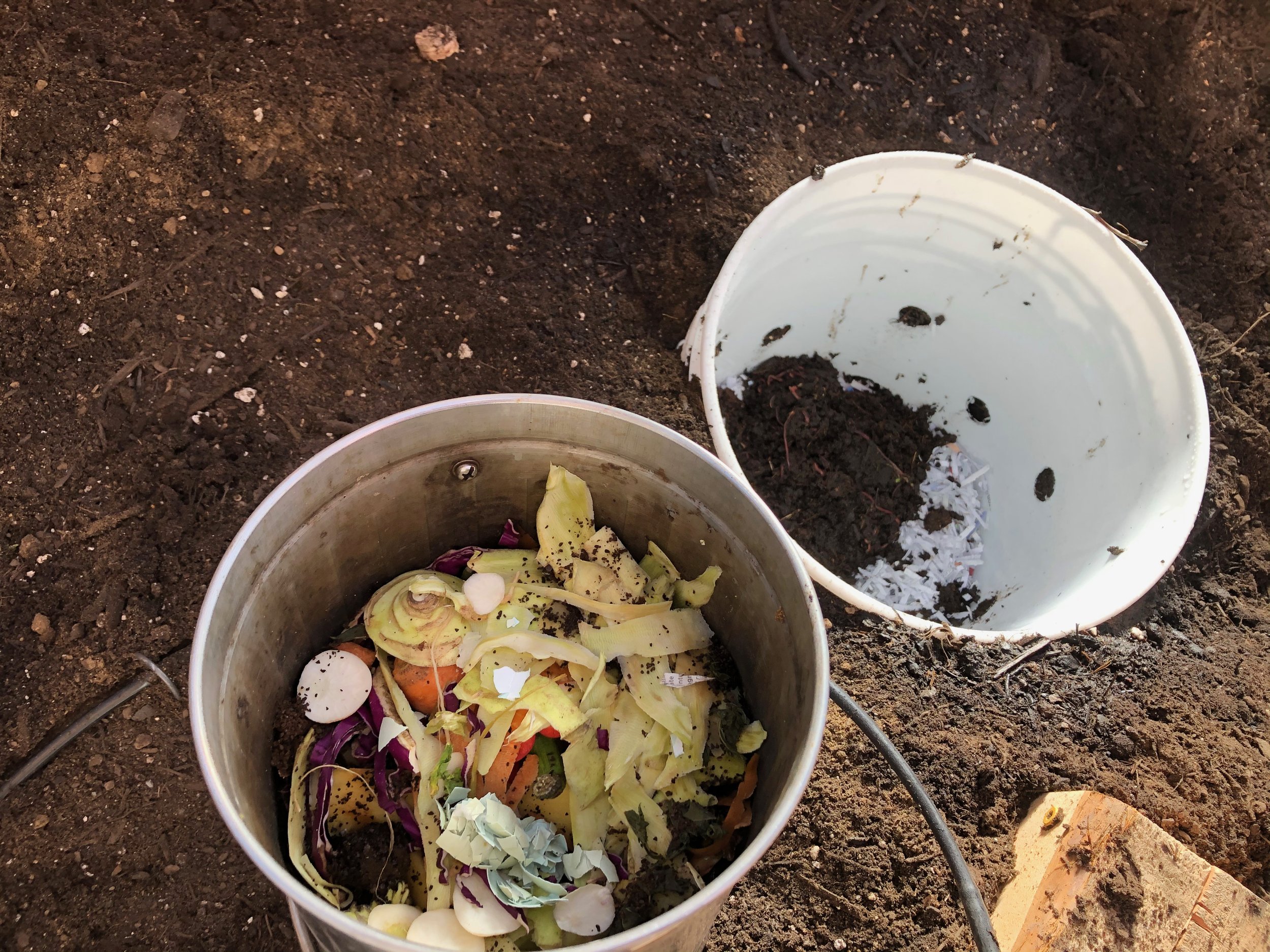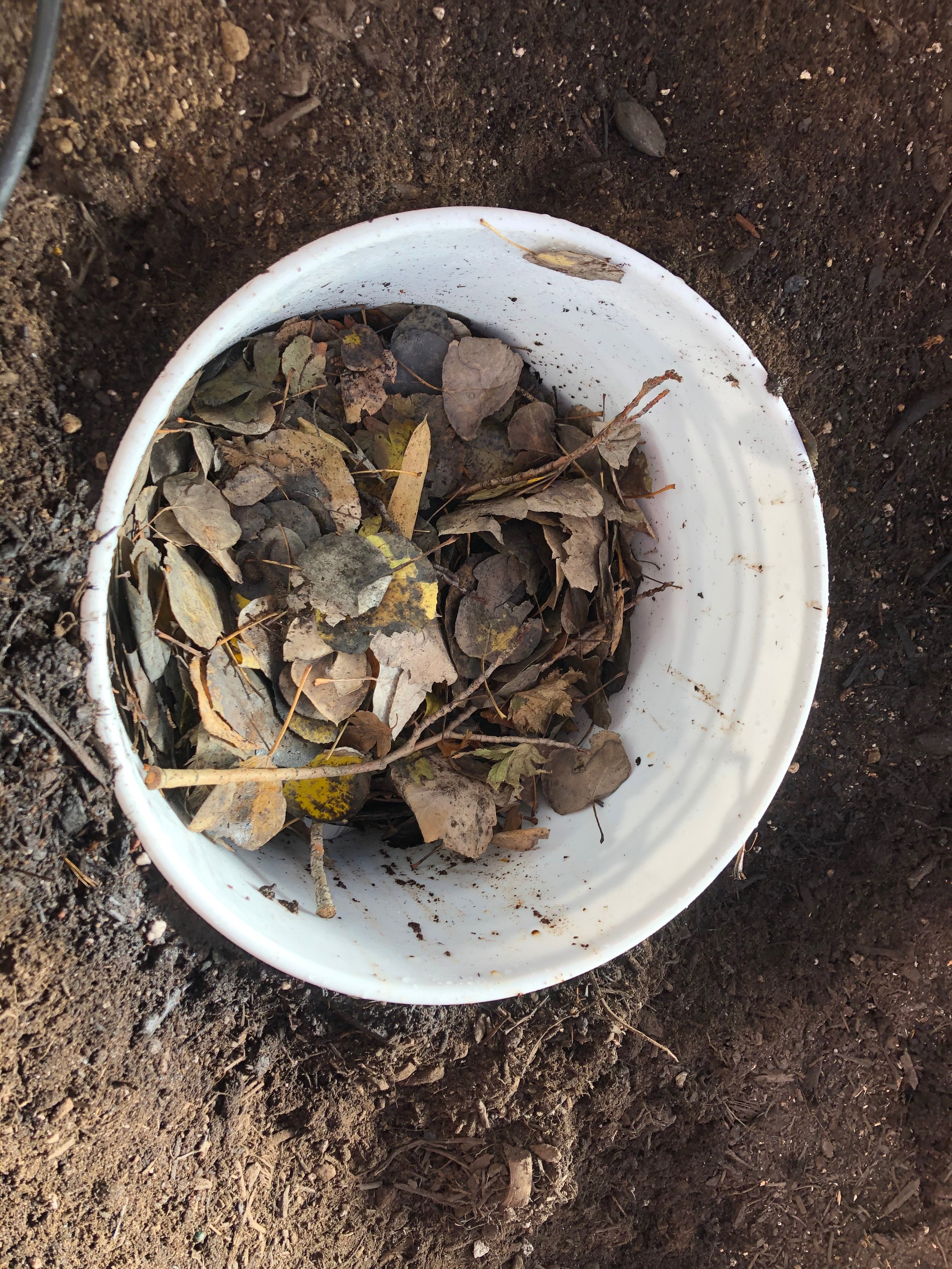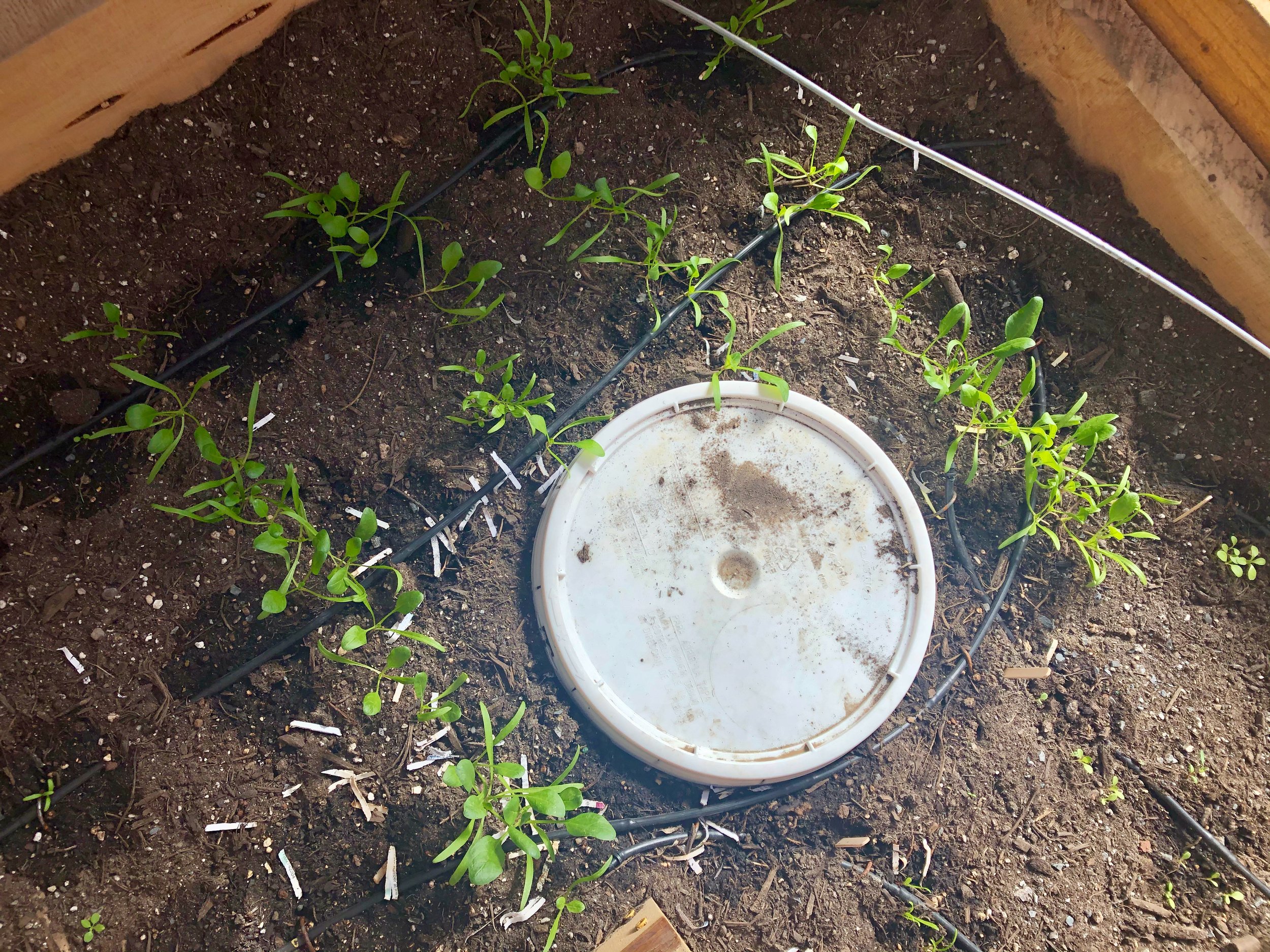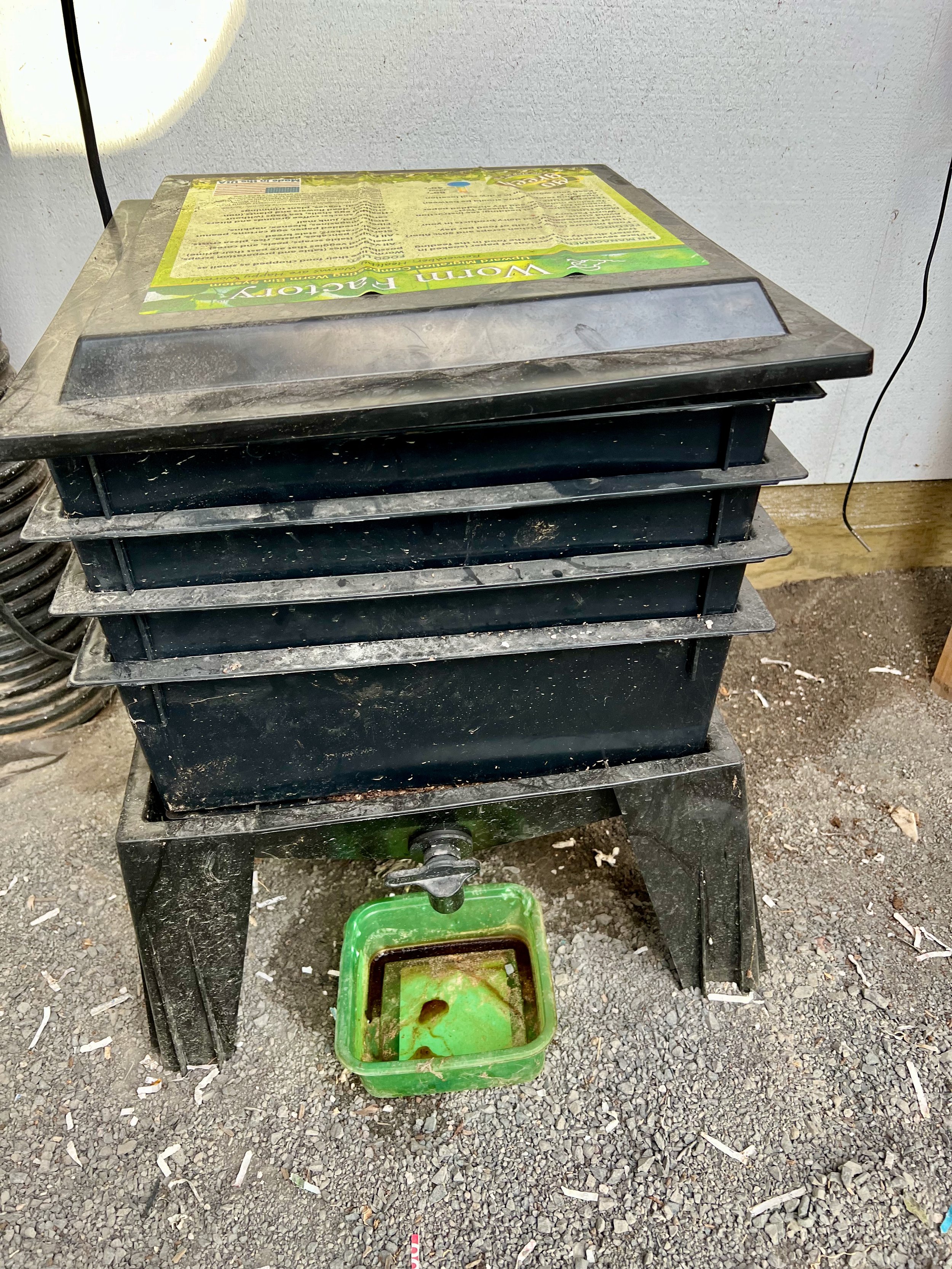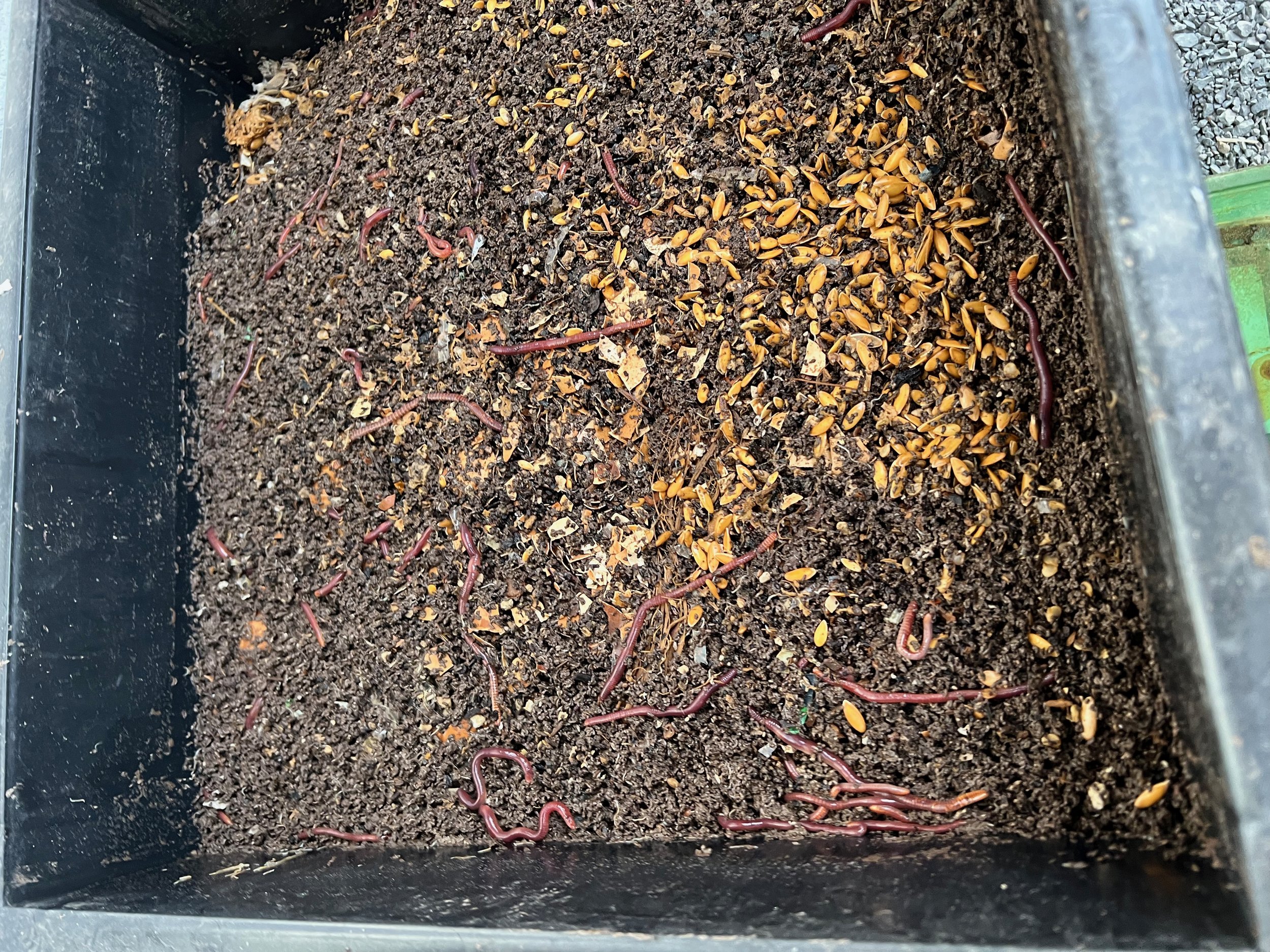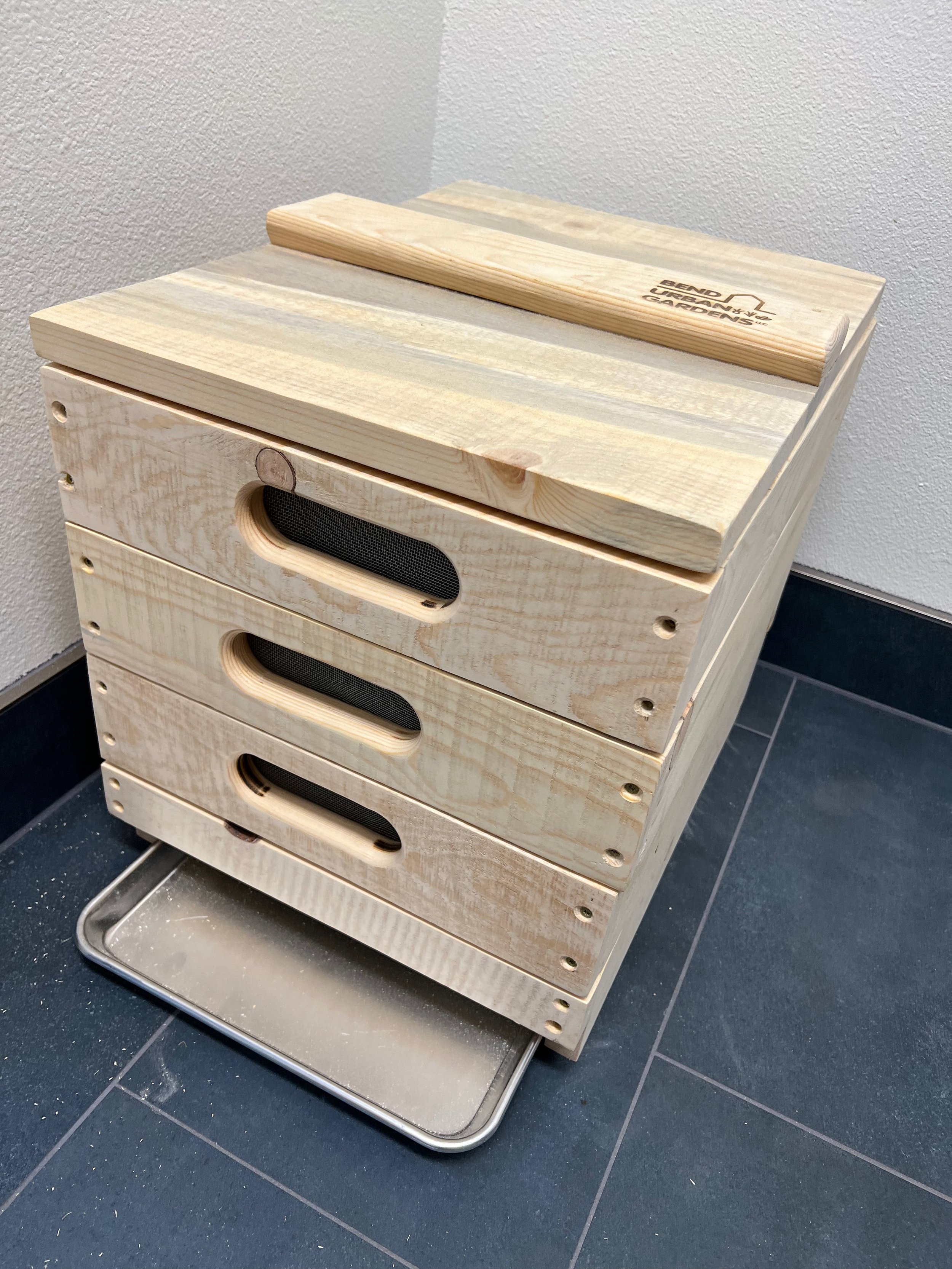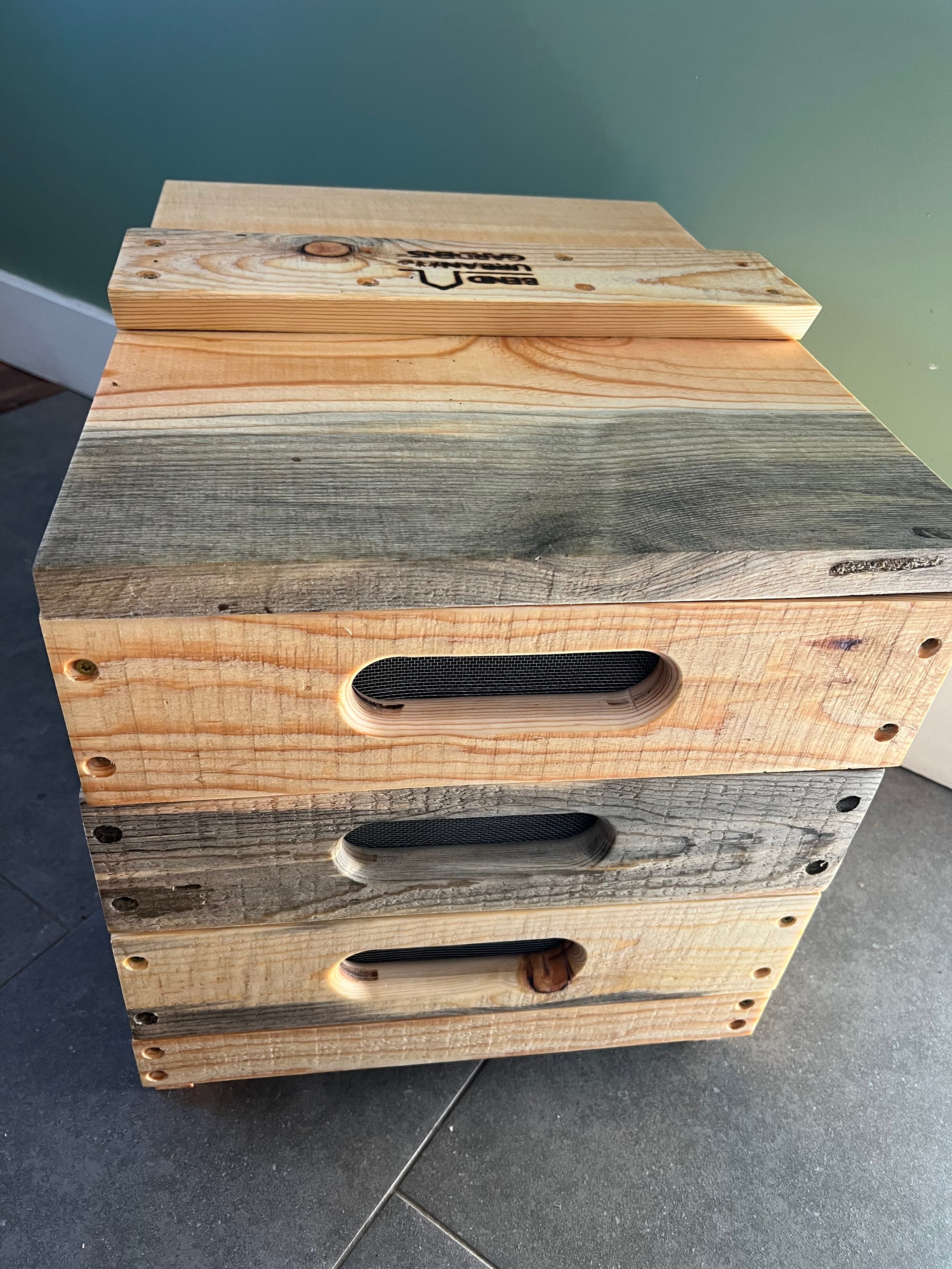Should I compost? How?
Did you know that wasted food, yard debris, and other organic materials make up 42% of Knott Landfill by tonnage? This organic material could be composted instead, adding beneficial nutrients to our soil and reducing methane gas.
What kind of organic material do you have on your property that could be turned into a beneficial soil amendment for your garden? Do you have mostly kitchen scraps? Grass clippings? Lots of yard debris? How much space, interest and time do you have to attend to your composting endeavors? Do you have chickens that could help?
Check out some of the many composting solutions we’ve experimented with:
3 bin system: Our 3-bin system works great for having a designated place for large amounts of material. We’ve had plans to add a lid to the three 3x3’ bins since we built them, but other tasks have taken priority. A lid would help retain moisture in our dry climate and keep the juniper droppings from the towering tree above from getting into our compost (which are allelopathic, or essentially toxic for other plants). Eek!
We use these bins to age chicken manure and pine shavings from cleaning out our chicken coop, break down chopped up (in the spring after insects have overwintered) sunflower stalks from the previous season, and as a location for other miscellaneous yard debris from cleaning up our perennial borders and turning over veggie crops in our raised beds. We could add kitchen scraps to these piles as well by digging down into the pile and covering them up after adding them.
We usually keep one bin empty so that we can turn piles to give the decomposers air and water. We don’t focus so much on creating a super well balanced pile and tracking its temperature, etc. This is a cold compost system that takes 6 months- 1 year to break down. We have made a screen that fits on top of our wheelbarrow for sifting the finished compost into 1/2” pieces, but honestly, we rarely use it. We mostly use this compost to top dress our perennial beds.
Enclosed bins: These are a great solution for more dense neighborhoods, those worried about potentially attracting unwanted critters, and for those looking for a tidier compost situation. The bins don’t tend to be as large as an open composting system, but can reasonably handle both yard debris and kitchen scraps. We recommend enclosed bins that have more than one compartment so that you can flip flop which compartment you add to and which compartment you are allowing to fully break down.
Yard debris bin: Maybe you’ve decided that you aren’t yet ready to compost on- site, or the idea of a decomposing pile isn’t something your household is ready for, but you want to be part of the solution for keeping more food waste out of the landfill.
While it still takes fossil fuels to move unwanted waste off your property, putting your yard debris and food scraps into the yard debris bin is a way to keep organic waste out of the landfill. Plus, you can put dairy and meat waste in it, too! Downside: it can be stinky, especially in the summer, as it gets picked up every other week.
Vermicomposting: This is our favorite way to compost and we think it’s the easiest way to get into composting for the compost curious and for those who don’t have much yard debris, but mostly fruit and veggie scraps. Red wiggler worms are incredible creatures that can break down food waste faster than any of the compost methods we’ve mentioned so far, and as long as you’re maintaining a well balanced bin, it should be odorless, too! You simply apply their non toxic waste (aka castings) to your garden when it looks and smells like dark soil!
Large plastic tote: This is probably the least expensive and least time intensive way to get a worm bin started. All you’ll need is bedding material (shredded paper, shredded cardboard, straw, peat moss, coconut coir, and/or shredded dried leaves), red wigglers, and food scraps. To harvest your castings, you can concentrate food on one side of your bin to entice your worms to migrate over there and then take out the castings on the other side of the bin.
5 gallon bucket: While it takes up real estate in your raised bed, this method rarely requires you to harvest castings. The bucket serves more as a concentrated location for feeding your worms, allowing them to roam freely throughout your garden bed, aerating your soil and spreading their castings all about. We made ours by cutting the bottom out of a food grade bucket, drilling 1” holes around it, adding bedding, red wigglers, food scraps and more bedding.
Plastic worm bin tower: This is a great solution for a small space, as the stackable tray system can be placed in a garage, shed, basement, pantry, or even under your kitchen sink. Ours lives in our four season solar greenhouse, since the temperature typically stays in the 40-80 degree range (except in the heat of summer)! As the bottom trays fill up with worm castings, we add additional trays above with new bedding and more food, inviting the worms to migrate up, allowing us to harvest their castings below.
Wooden Worm Bin Tower: There is so much plastic involved in gardening, especially in Central Oregon in order to keep our plants protected. So, we decided to build wooden worm bins for home gardeners! Handmade out of fire salvaged, locally milled blue stain ponderosa, these worm compost towers look beautiful, too! You can start with 3 trays and add more as you assess your food scrap volume and worm needs.
Compost alternatives: Live in an apartment or have super limited space? Machines like the Vitamix Foodcycler basically dehydrate and pulverize food scraps, reducing their volume. You can use the resulting material as a soil amendment, but just know that it won’t have the beneficial microorganisms for your garden that the other composting methods we’ve highlighted have.
Still overwhelmed? Perhaps before deciding on how to dispose of your household’s compostable waste, it may be worth reducing the amount of food waste you create in the first place.
Years ago, my husband and I took the Environmental Center’s rethink food waste challenge, and the free 4 week home challenge helped us find out what, and how much, food was going to waste in our home. Over the course of the month, we received an email per week with tips and tricks on how to reduce our wasted food. Check out some tips and tricks on reducing food waste, along with more information to help you make an informed decision about composting solutions.
